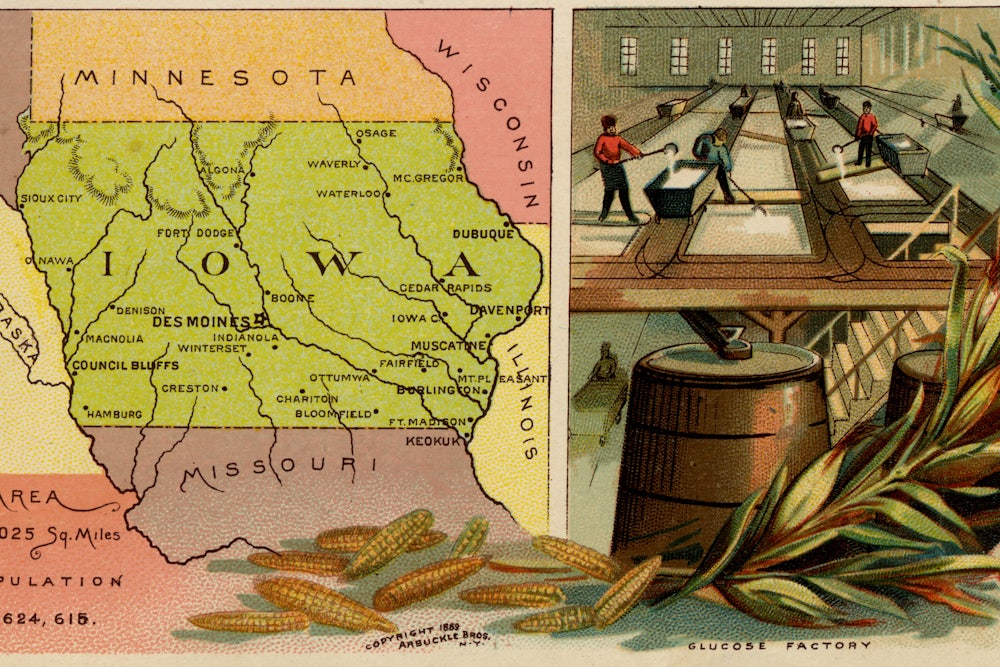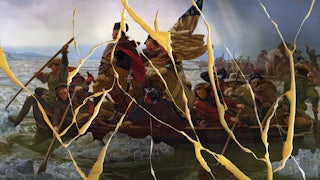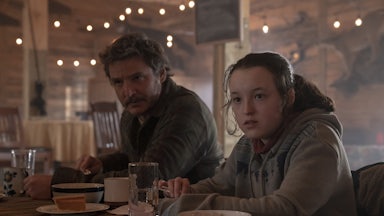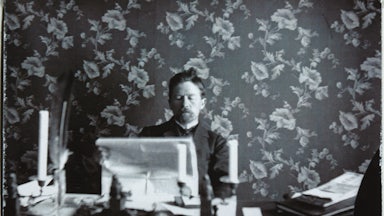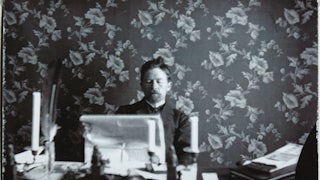If you’ve seriously studied or written about the Midwest in the last, say, decade, you owe something to Jon K. Lauck. Starting in 2013 with The Lost Region—not a history of the region but of its historians—he has tirelessly promoted Midwestern history. Both through an impressive string of books and by helping to found the Midwestern History Association, he has worked to revive and reorganize the study of a region that sometimes forgets it has a history, a culture, or even, famously, an accent. (Pronounce that first syllable through your nose.)
Now Lauck has given us the fullest articulation yet of his vision of the Midwest. His new one-volume history, The Good Country: A History of the American Midwest 1800-1900, presents the nineteenth-century Midwest as “the most advanced democratic society that the world had seen to date.” He argues for the recovery of this history, a story of “democratic vigor, cultural strength, racial and gender progress, and civic energy,” which should be remembered not only for the sake of accuracy but also for “our own wellbeing.”
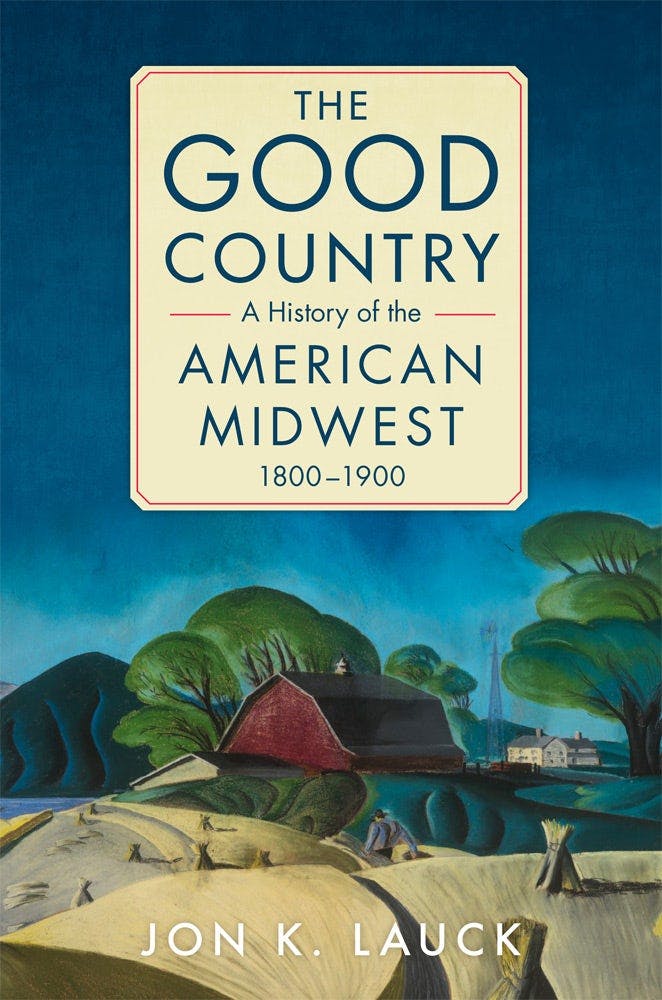
In some ways, the case Lauck puts forward is persuasive. He cites a record of progressive legislation that at least puts the early Midwest ahead of the rest of the United States and Europe. Ohio, the first Midwestern state, banned slavery and debtor’s prisons in its 1802 constitution. Indiana banned slavery in 1816, Iowa in 1846. (Six years later, Iowa became the third state in the union to allow interracial marriage.) Illinois partially banned it in 1818 but allowed both indentured servitude and—up through 1825—the use of slaves in the state salt springs. My own state, Michigan, banned slavery in its 1837 constitution; our current constitution, ratified in 1963, allows it as a form of punishment. Progress is a vulnerable thing.
Ohio also set a healthy pattern with regard to voting. In 1803, Ohioans universalized white male suffrage, and failed to extend the franchise to Black men by only one vote. In the South or the Northeast, at that time, a would-be voter still generally needed to hold property, or to qualify for what we’d now call a high tax bracket, while other comparable countries—Lauck mentions England, Russia, Brazil, and France—were, respectively, a Tory oligarchy with an extremely restricted suffrage, an autocracy, a colony, and a mess.
But voting, instructive as it is, also exemplifies how hard such comparisons are to make, how much we are fighting—as historians, as citizens—over the meaning of the very terms we seek to compare for. Some readers will already be asking, for example, why Lauck does not compare Midwestern democracy to Native American practices, given that these polities were just down the road apiece. But Lauck is talking specifically about voting, and the Iroquois League, for example, neither voted nor was voted upon. When a chief died, a group of women decided on his replacement; this replacement would then gather to discuss any given issue with the other members of the League until a consensus was reached. One can see at a glance that this process was not “democratic” in Lauck’s sense, and that, at the same time, it more fully enfranchised women than did universal white-male suffrage. Ranking varying degrees of democratic-ness is indeed a complex exercise.
All the states Lauck writes about benefited from the liberality of the Northwest Ordinance of 1787. That law covered the territory from Pennsylvania west as far as the upper Mississippi River. In addition to banning slavery in these places, it also protected religious and press freedom, and encouraged the building of schools. The Midwest thus had a mini–Bill of Rights in 1787, before the U.S. as a whole did, and the freedoms it proclaimed went further than did the federal Bill of Rights.
Yet the Ordinance was barely enforceable since there was not yet a central government powerful enough to do the job. Settlers in unincorporated parts of the territory brought enslaved people with them, and Illinois and Michigan, under French rule, had legally permitted slavery in the recent past. At the very least, though, the Ordinance set a precedent that proslavery forces in the future states of the Northwest Territory ultimately couldn’t overturn, despite repeated attempts.
For Lauck, the Ordinance, whatever its enforceability, fostered a wider unity founded on a shared culture: free soil, free labor. (My inner cynic whispers the words: “Free real estate.”) He shows that some prominent early Midwesterners understood the ordinance in this same way, as a kind of local constitution: one writer calls it the “Magna Carta” of the Midwest. Perhaps the greatest testimonial to it that he finds comes from John C. Calhoun, who calls it a “sin” against the South. Any law John Calhoun hated can’t be all bad.
Nor was it all good. Lauck devotes a chapter to acknowledging the prevalence of oppressive Black Laws throughout the region, and he discusses anti-Native violence, though here he veers awfully close to apologetics. He emphasizes the degree to which Ohio, specifically, had been depopulated by the seventeenth-century war between the Iroquois and Huron confederacies. Smallpox brought by European traders and settlers then ripped through Huronia in the 1630s, killing as much as two-thirds of the population. The tribes that had “trickled back” into the area by the 1740s had often sided with the French against the British, and then, in some cases, with the British against the colonists. Settlers could tell themselves, in effect, that they were fighting agents of the Crown whenever they claimed a bit of someone else’s hunting ground. It may be true that this is what settlers told themselves, but it still sounds like, well, something you tell yourself.
The sources Lauck uses, on examination, gave a fuller and more damning portrayal of the situation. David Andrew Nichols’s Peoples of the Inland Sea, for example, cites evidence that even some of their fellow citizens regarded Midwestern pioneers as excessively “land-hungry,” while Elizabeth Mancke, in a brilliant article on indigenous geopolitics, reminds us that it was American intransigence during the negotiations that ended the War of 1812 that squashed the possibility of an indigenous republic somewhere within Ohio territory. Lauck reminds us not to judge nineteenth-century Americans by contemporary standards, but these sources suggest that the idea of dealing squarely with Native Americans was not inconceivable even then. It still isn’t.
In several places, Lauck tries to define Midwestern identity: the cultural comity that allowed democracy to flourish. He examines the centrality of religion (mostly Christianity) to the Midwest; the region’s strong emphasis on education (90 percent adult literacy by the time of the Civil War); its culture of clubs, lodges, literary societies, and general joining up. Such institutions gave Midwesterners a sense of common purpose that cut against the chaotic tendencies of a young democracy. Midwestern identity contrasted with Northeastern and particularly Southern self-understanding:
One Georgia editor said he was “sickened” by the “free society” of the Midwest and its “conglomeration of greasy mechanics, filthy operatives, small-fisted farmers, and moon-struck theorists” who were “hardly fit for association with a southern gentlemen’s body servant.”
I confess that I, a moon-struck theorist, could not read this passage without a little swelling of regional pride. And indeed, it is in this chapter that Lauck’s generally laudatory tone feels most appropriate. For it is in this chapter that he writes about the Midwesterners who raced to fight the slave power, under a president, Abraham Lincoln, who represented their best traits. At this moment, the Midwest, however compromised, really did cover itself with glory. But here, too, those compromises are too big to wave aside. In 1862, Lincoln committed the largest mass execution in American history, and it was, not accidentally, a response to a Sioux uprising.
Lauck clearly wishes to inspire such small swellings of regional pride. In the book’s opening chapter, he contrasts the Midwest’s admirable qualities—“a moral code … virtuous patriotism, recognition of civic obligations”—with the “corrosive cynicism” of “modernity.” Lauck wants to argue for a small-c conservative patriotism, a respect for entrepreneurship and industry tempered by an acknowledgment (contra the libertarians) that communal moral obligation exists.
Familiarity with his earlier work makes the contours of this politics clearer. For example, his first book, American Agriculture and the Problem of Monopoly (2000), argues for a limited revival of antitrust law—rather than labor organizing or changes in federal farm policy more generally—to revivify Midwestern farming. In a 2017 piece, reviewing Jess Gilbert’s study Planning Democracy: Agrarian Intellectuals and the Intended New Deal, he asks: “How Washington-dominated central economic planning can be ‘democratic’ always remains a bit of a riddle that [Gilbert’s] policymakers always seemed to muddle through.” If you find this criticism convincing, you will probably find Lauck’s vision—small-scale capitalism tempered by respect for hard work and strong ties—powerful. If, on the other hand, your response to it is, “Well, I can vote on what the federal government does, and I can’t vote on what capital does, and one of those is going to do all the planning,” then you won’t.
I don’t share Lauck’s vision, but I appreciate that Lauck states it so forthrightly. When we read and write history, we are not always looking for models—which is good, because they aren’t always there—but we are at least looking to make sense of something, to situate ourselves against a background. Every historian is a moon-struck theorist. But this is why it is so frustrating when Lauck then criticizes contemporary historians for an excessive focus on the marginalized or on the sins of the past, for portraying American history as a “long train of abuses” because that is how it looks to our modern sensibilities. (That’s also how it was experienced by some of the people living through or observing it; otherwise, we carping moderns wouldn’t have their testimony to point to when we complain.) Lauck admires the idealism of the early Midwesterners, but polemic is one of the commonest modes that idealism speaks in.
We can learn from historians whose overall vision we don’t
share. Frankly, the breadth and depth of Lauck’s research, and the amplitude of his
footnotes, are all the defenses this book needs; I would recommend it as one of
the first books of Midwest history a person might read. (I would just want them
to tackle, say, Tiya Miles’s Dawn of
Detroit, William Hogeland’s Autumn of
the Black Snake, and Kristin Hoganson’s The
Heartland: An American History, not to mention Richard White’s classic The Middle Ground, along with it.) But Lauck’s conservatism, I think,
leads him to downplay too much, particularly when it comes to Native American
history.
What’s more surprising is that he misses an opportunity to
display one trait to which conservative intellectuals are often finely attuned:
a tragic sense. The story he tells is shot through with tragedy—the way the
idealism he celebrates coexisted with sharp dealing and mass murder; the
impossible choices faced by one Native leader after another. But even if we are
fully persuaded by that story as Lauck tells it, then it is, in its own way,
the setup for a tragedy of its own.
One product of the free labor–free soil culture that Lauck admires, John Watson Foster, worked so hard as to find himself Secretary of State under President Benjamin Harrison, an Ohioan. From that position he helped steal Hawaii; later, he invented the despicable, rather un-Midwestern practice known as lobbying. (Midwesterners of course eventually got quite good at this practice—consider Michigan’s historic role in slowing down climate legislation, or Iowa’s in propping up ethanol.) Devoted, like a good Midwesterner, to his family, Foster spent a lot of time with the grandkids, John Foster and Allen Macy Dulles. If John Watson Foster’s homeland was notable in its time for the extension of the franchise, his beloved grandsons—tireless promoters of coups and guardians of Nazi wealth—must rank among the twentieth century’s greatest underminers of the popular will.
Clean living and hard work do sometimes lead to success. And then where are you? If you’re not careful, you might wind up on top of the world, with all the other monsters.
